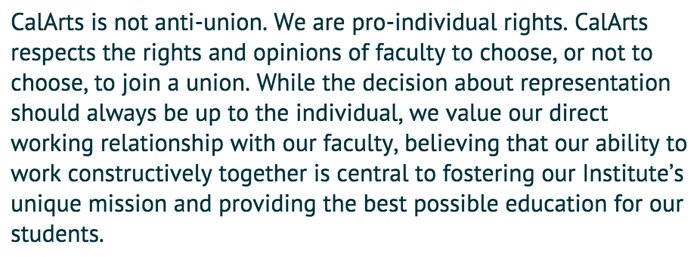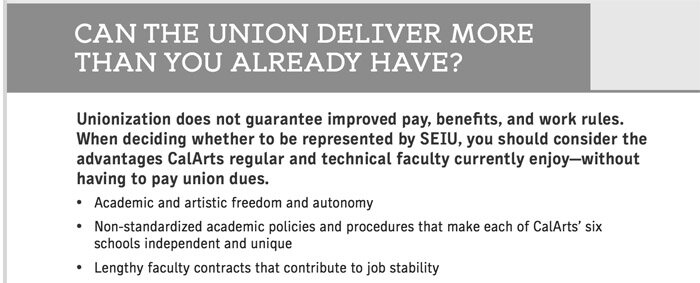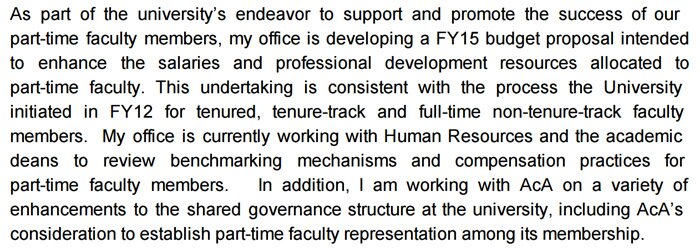What to Expect
As more and more faculty join the movement for higher pay, better benefits, and increased job security through unionization, many university administrators are quick to speak directly to faculty about their decision to unionize through one on one meetings, emails, and websites dedicated to the topic of faculty unionization.
Perhaps not surprisingly, many university communications seem to follow the same pattern.
First, university officials make clear that they know faculty have been speaking with organizers:
University of Southern California:

Seattle University:

Administrators encourage faculty to seek out more information on the topic of unionization, and urge faculty to become informed and engaged:
Many institutions are quick to point out that unions require faculty to pay membership dues:
California Institute of the Arts:

Otis College of Art and Design:

With no guarantee of increased wages:
California Institute of the Arts:

Otis College of Art and Design:

And with enough research, faculty will begin to understand that forming a union isn’t the way to improve their working conditions:
BUT, administrators say, that doesn’t mean they’re anti-union, they just don’t think a faculty union is a good idea on their campus:
University of Southern California:

California Institute of the Arts:

Finally, many universities will highlight their recent efforts to improve contingent faculty involvement on campus, and showcase the benefits faculty already receive:
University of Southern California:
![]()
California Institute of the Arts:










